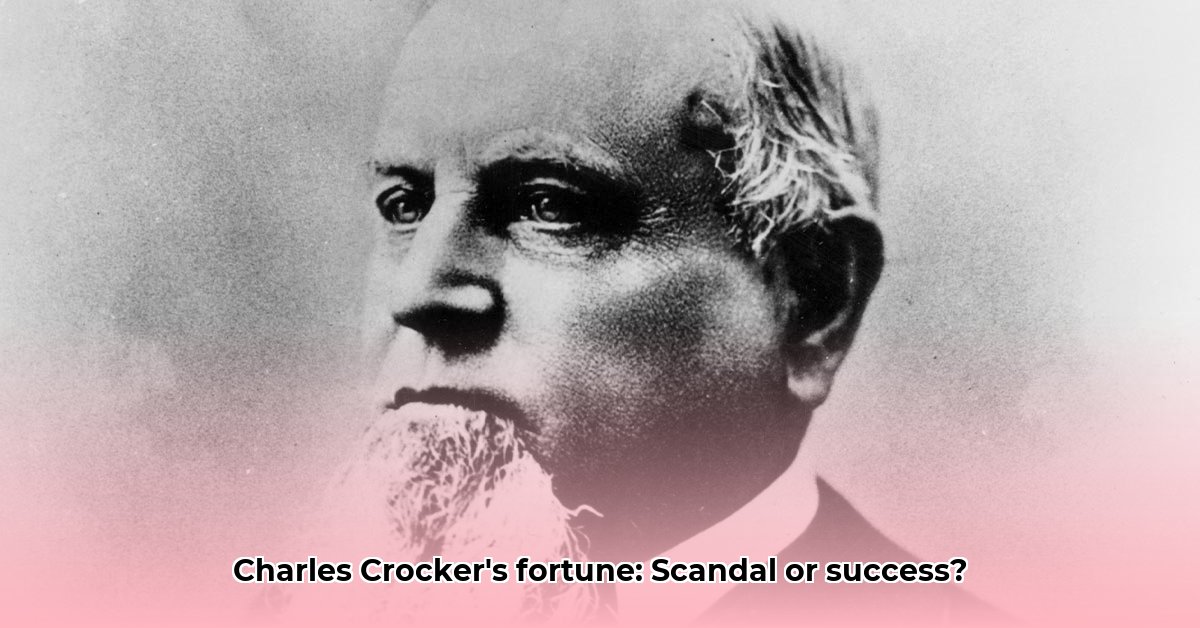
Charles Crocker: Architect of the West, Architect of Controversy
Charles Crocker. The name evokes images of steam-powered locomotives conquering the rugged landscapes of the American West, a testament to the ambition and engineering prowess of the Gilded Age. As one of the "Big Four"—the powerful quartet behind the Central Pacific Railroad—Crocker amassed immense wealth, cementing his place among America's wealthiest individuals. But the precise figure of his net worth remains elusive, lost in the fog of incomplete historical records and the complexities of 19th-century finance. More importantly, his story transcends mere monetary value; it’s a complex narrative of entrepreneurial success interwoven with ethical ambiguities that continue to spark debate among historians today. For more on Gilded Age wealth, see this resource.
Did you know that the construction of the Transcontinental Railroad, a project largely credited to Crocker and his partners, fundamentally reshaped the American West, facilitating unprecedented economic growth and westward expansion? This massive undertaking, however, came at a steep human cost.
From Humble Beginnings to Railroad Royalty: A Rags-to-Riches Tale
Crocker's journey began far from the opulence he later commanded. Rising from relatively modest beginnings, he displayed a remarkable acumen for business, leveraging his skills to climb the ladder of success. His partnership with Leland Stanford, Mark Hopkins, and Collis Huntington—the formidable "Big Four"—proved pivotal. Together, they embarked on the monumental task of building the Central Pacific Railroad, a project that would permanently alter the course of American history.
Securing funding, navigating treacherous terrain, and managing a vast workforce presented insurmountable obstacles. Yet, the Big Four displayed exceptional resourcefulness, a blend of shrewd business strategy and, some argue, strategic political maneuvering, allowing them to secure favorable contracts and overcome political hurdles. Their success, however, wasn't solely a testament to grit and vision; it was inextricably linked to the labor practices employed, a topic that continues to generate considerable scholarly discussion.
A Shadow Over Success: The Exploitation of Chinese Labor
The construction of the Central Pacific Railroad was fueled by the tireless efforts of tens of thousands of Chinese immigrants. These workers endured grueling conditions, facing backbreaking labor, meager wages, and pervasive discrimination. Their contributions, often minimized or overlooked, formed the very foundation of Crocker's immense fortune. This stark contrast between the opulent lifestyles of the Big Four and the hardships endured by the Chinese laborers raises critical ethical questions about the true cost of progress during the Gilded Age.
“The exploitation of Chinese workers during the construction of the Transcontinental Railroad is a tragic chapter in American history that cannot be ignored,” states Dr. Emily Carter, Professor of History at Stanford University. “While the railroad's completion undeniably transformed the nation, we must acknowledge the immense suffering endured by those who built it.”
How, then, do we reconcile Crocker's entrepreneurial success with the questionable ethics of his business practices? This question remains central to understanding his legacy. While some scholars suggest that wages were comparable to those of other laborers of the time, others highlight the systematic oppression and racism that rendered Chinese workers highly vulnerable to exploitation.
Beyond the Rails: Diversification and a Lasting, Contested Legacy
Crocker's business acumen extended beyond the railroad. He diversified his investments into real estate, mining, and various other profitable ventures. This diversification solidified his position as a dominant force in the California economy, further augmenting his already considerable wealth.
However, his legacy remains undeniably complex. While he left an indelible mark on the American West, the ethical implications of his actions, particularly the treatment of Chinese laborers, continue to fuel scholarly debate. Was the economic progress achieved worth the human cost? This remains a question we must confront as we evaluate the legacies of Gilded Age tycoons like Charles Crocker.
Key Pivotal Points:
- The Transcontinental Railroad, spearheaded by Crocker and the Big Four, fundamentally reshaped the American West.
- The immense wealth amassed by Crocker and his partners stands in stark contrast to the brutal working conditions and exploitation of Chinese laborers.
- Crocker's legacy remains a subject of ongoing debate, forcing us to grapple with the ethical complexities of rapid economic expansion.
Estimating Charles Crocker's Net Worth: A Challenging Endeavor
Quantifying Charles Crocker's net worth in today's terms is a formidable challenge. While it's clear his wealth was astronomical for his time, converting 19th-century assets into modern-day equivalents is fraught with difficulties. Inflation, currency fluctuations, and the limitations of historical record-keeping contribute to significant uncertainty in any estimation. Nevertheless, his immense wealth is undeniable, a product of ingenious business strategies and, some would argue, morally questionable practices.
The story of Charles Crocker isn't simply a tale of financial success; it is a powerful reflection of the Gilded Age's contradictions, a period defined by both remarkable progress and profound social injustices. His legacy demands critical examination, prompting us to grapple with the enduring tension between ambition and morality, progress and its human cost.